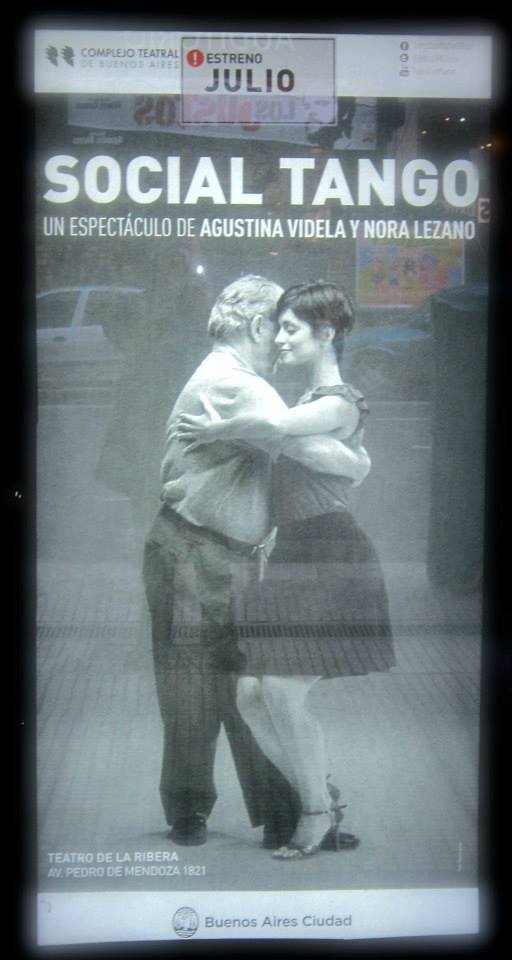I was privileged to observe a rehearsal of SOCIAL TANGO and am the more regretful that the show’s opening does not overlap with my stay in Buenos Aires. This does not fit the stereotype of a tourist show, but a tourist ought to love it. The dances are not about acrobatics or overwrought sexuality. There is nothing forced in the way that tango enters the lives of the persons portrayed. They come across tango, and each other, and they dance it. Sometimes they have to learn it, sometimes they teach it, and sometimes they know it already.
This is tango as social act, and social choice. This is tango as the rhythm of a fortuitous meeting, or the passage of a pedestrian to his destination. There are partners in the moment, and friendships to come. This is, in Edwin Denby’s phrase that is my favorite ever written about dancing, the tango of “dancers, buildings and people in the streets.” This is the floor rather than the stage, the human being rather than the dramatist. These are bodies soft and casual instead of hard and formal, not identically sculpted but subtly varied, yet with the unison of a social form.
Of the three films that will intersperse the dancing, I saw at least part of the first one; it captured, as black-and-white so often does, the hidden dimensions of a city that one sees, as a daily matter, in color, and hears normally to the roar of traffic, rather than in the silent repose that music can paradoxically produce. There will also be a photo exhibit in the lobby of the theater, of the most traditional milongueros dancing at the milongas that are pieces of their lives. I wish I could be here for the whole experience, but what I saw of it I will recollect in tranquility.
The website is worth a visit even if you are not lucky enough to be in Buenos Aires when the show has opened: the images, moving and still, have the integrity of a vision that consists simply of seeing what is before one.
For more on the Social Tango Project, click here.
